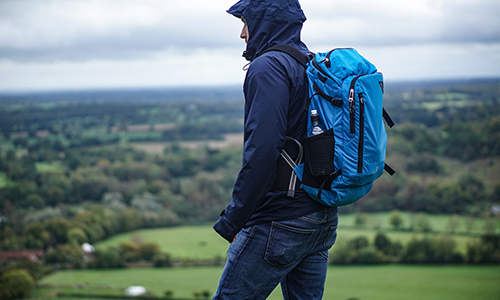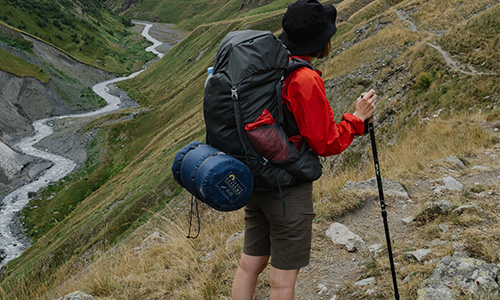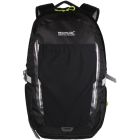A Beginner's Guide to Exploring the Great Outdoors
Author

A keen runner, skier and nuts about cycling. Karl lives in Cumbria, where he loves encouraging his two children to follow in his outdoor lifestyle. Whilst out and about keeping active, Karl keeps a diary and shares it with Outdoor Look.
Hiking is a journey into the heart of nature, a chance to escape the hustle and bustle of daily life. It is a great opportunity to challenge yourself physically and mentally. If you're new to hiking, the thought of hitting the trails might seem daunting at first, but fear not! With a bit of preparation and a spirit of adventure, you'll soon discover the joys of exploring the great outdoors on foot.
Tapping Into Your Network
If you're fortunate to have friends or acquaintances who are avid hikers, don't hesitate to reach out to them. Many seasoned hikers are more than willing to share their knowledge, lend gear, and introduce newcomers to their favourite trails. Don't be shy about asking for advice or guidance—it's often the first step towards forming lasting hiking friendships. For those who don't have hiking buddies in their immediate circle, there are plenty of opportunities to connect with like-minded individuals through hiking clubs and online communities. Many cities and towns have hiking clubs that organize regular outings and welcome hikers of all skill levels. These clubs provide a supportive environment for beginners to learn from more experienced members and discover new trails together.
Choosing the Perfect Trail
Once you've found your hiking companion or group, the next step is selecting the ideal trail for your adventure. Guidebooks, websites, and hiking forums are valuable resources for discovering trails that match your preferences and skill level. Look for trails with clear descriptions, including difficulty ratings, distance, elevation gain, and notable features.

Considering Trail Factors
When choosing a hiking route, it's essential to consider several factors, including:
Time Available: Determine how much time you have for your hike, including travel to and from the trailhead. Choose a trail that fits within your schedule and allows ample time to enjoy the journey.
Fitness Level: Be honest about your fitness level and choose a trail that aligns with your capabilities. Beginners may want to start with shorter, easier hikes before tackling more challenging terrain.
Weather and Season: Check the weather forecast and seasonal conditions before heading out on your hike. Dress appropriately for the weather and be prepared for changing conditions, especially in mountainous regions.
Distance and Elevation Gain: Consider the distance and elevation gain of the trail, taking into account your hiking pace and endurance. Gradually increase the difficulty as you gain experience and confidence on the trails.

Pack Mindfully
Before hitting the trails, it's essential to equip yourself with the right gear and clothing to ensure a safe and enjoyable hiking experience. Here's a closer look at some essential items to consider:
Footwear: Invest in footwear specifically designed for hiking, with features like waterproofing, ankle support, and durable soles to navigate various terrain types comfortably.
Clothing: Always choose moisture-wicking clothing made from materials like merino wool or synthetic fabrics that draw sweat away from your skin and dry quickly.
Hydration and Nutrition: Carry an adequate supply of water to stay hydrated throughout your hike. Pack lightweight, high-energy snacks to fuel your hike and replenish your energy stores along the way.
First Aid Kit: Pack essential items like adhesive bandages, gauze pads, adhesive tape, antiseptic wipes, blister treatment, pain relievers, tweezers, scissors, and any personal medications you may need.
-
 Regatta Mens Britedale Durable Adjustable 30 Litre Backpack£41.68RRP £115.00 Save Up To £73.32
Regatta Mens Britedale Durable Adjustable 30 Litre Backpack£41.68RRP £115.00 Save Up To £73.32
Author

A keen runner, skier and nuts about cycling. Karl lives in Cumbria, where he loves encouraging his two children to follow in his outdoor lifestyle. Whilst out and about keeping active, Karl keeps a diary and shares it with Outdoor Look.
Categories
- Sport (28)
- Product Reviews (3)
- Team Outdoor Look (7)
- Mike Wild (2)
- Mike Payton (2)
- Suse Hammond-Pears (3)
- Snowboarding (12)
- Latest Offers (105)
- Shop Talk (1)
- Competitions (7)
- Walking (413)
- Lifestyle Fashion (8)
- Travel (86)
- Kit Guides (176)
- Workwear Clothing (6)
- Safety Workwear (4)
- Health/Fitness (289)
- Skiing (91)
- Great Outdoors (1316)
- Cycling (92)
- January 2025
- December 2024
- November 2024
- October 2024
- September 2024
- August 2024
- July 2024
- June 2024
- May 2024
- April 2024
- March 2024
- February 2024
- January 2024
- December 2023
- November 2023
- October 2023
- September 2023
- August 2023
- July 2023
- June 2023
- May 2023
- April 2023
- March 2023
- February 2023
- January 2023
- December 2022
- November 2022
- October 2022
- September 2022
- August 2022
- July 2022
- June 2022
- May 2022
- April 2022
- March 2022
- February 2022
- January 2022
- December 2021
- November 2021
- October 2021
- September 2021
- August 2021
- July 2021
- June 2021
- May 2021
- April 2021
- March 2021
- February 2021
- January 2021
- December 2020
- November 2020
- October 2020
- September 2020
- August 2020
- July 2020
- June 2020
- May 2020
- April 2020
- March 2020
- February 2020
- January 2020
- December 2019
- November 2019
- October 2019
- September 2019
- August 2019
- July 2019
- June 2019
- May 2019
- April 2019
- March 2019
- February 2019
- January 2019
- December 2018
- November 2018
- October 2018
- September 2018
- August 2018
- July 2018
- June 2018
- May 2018
- April 2018
- March 2018
- February 2018
- January 2018
- December 2017
- November 2017
- October 2017
- September 2017
- August 2017
- July 2017
- June 2017
- May 2017
- April 2017
- March 2017
- February 2017
- January 2017
- December 2016
- November 2016
- October 2016
- September 2016
- August 2016
- July 2016
- June 2016
- May 2016
- April 2016
- March 2016
- February 2016
- January 2016
- December 2015
- November 2015
- October 2015
- September 2015
- August 2015
- July 2015
- June 2015
- May 2015
- April 2015
- March 2015
- February 2015
- January 2015
- December 2014
- November 2014
- October 2014
- September 2014
- August 2014
- July 2014
- June 2014
- May 2014
- April 2014
- March 2014
- February 2014
- January 2014
- December 2013
- November 2013
- October 2013
- September 2013
- August 2013
- July 2013
- June 2013
- May 2013
- April 2013
- March 2013
- February 2013
- January 2013
- December 2012
- November 2012
- October 2012
- September 2012
- August 2012
- July 2012
- June 2012
- May 2012
- April 2012
- March 2012
- February 2012
- January 2012
- December 2011
- November 2011
- October 2011
- September 2011
- August 2011
- May 2010
- April 2010
- March 2010
- February 2010
- January 2010
- November 2009
- October 2009
- September 2009


Submit a Comment